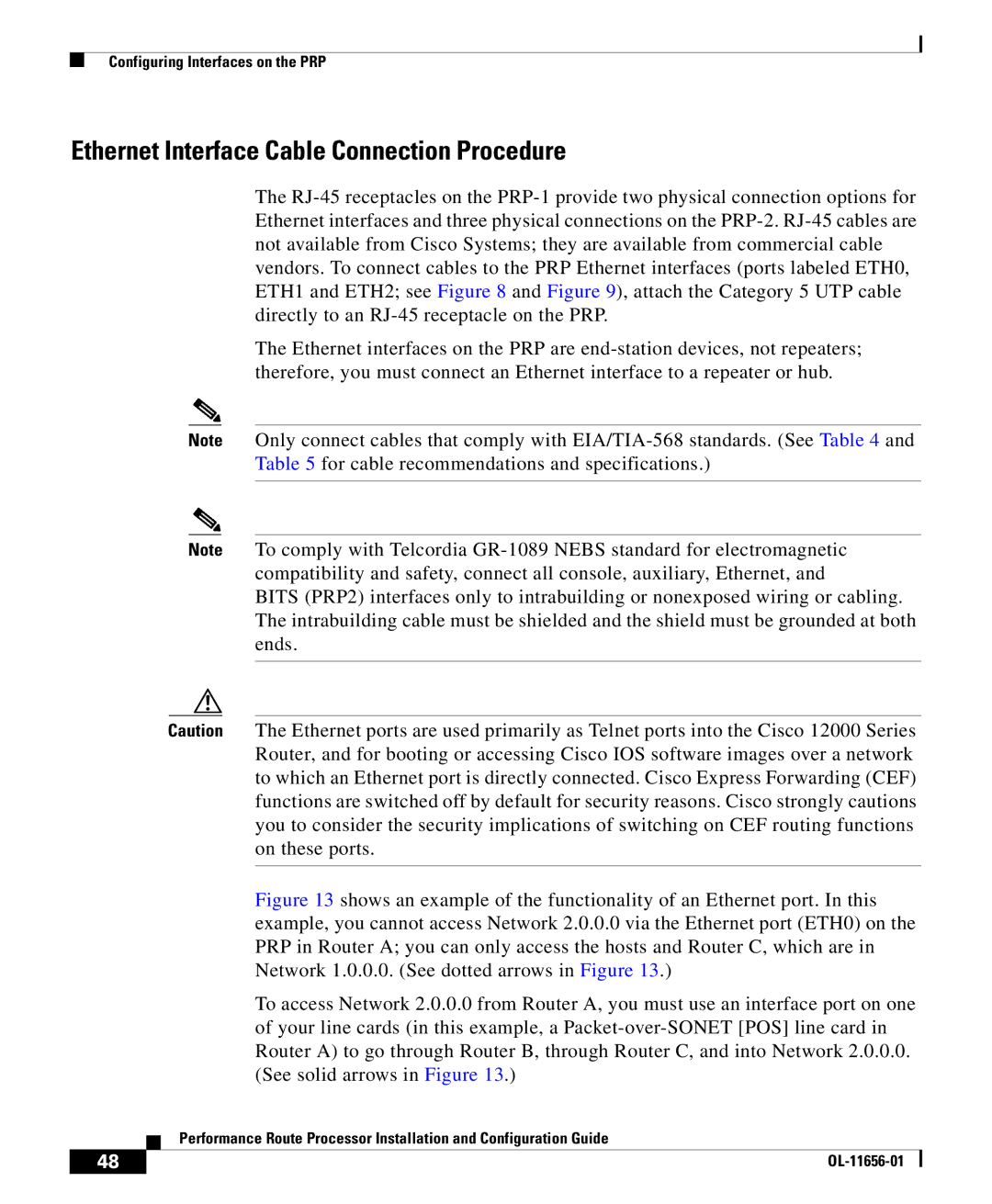
Configuring Interfaces on the PRP
Ethernet Interface Cable Connection Procedure
Note
Note
The
The Ethernet interfaces on the PRP are
Only connect cables that comply with
To comply with Telcordia
BITS (PRP2) interfaces only to intrabuilding or nonexposed wiring or cabling. The intrabuilding cable must be shielded and the shield must be grounded at both ends.
Caution The Ethernet ports are used primarily as Telnet ports into the Cisco 12000 Series Router, and for booting or accessing Cisco IOS software images over a network to which an Ethernet port is directly connected. Cisco Express Forwarding (CEF) functions are switched off by default for security reasons. Cisco strongly cautions you to consider the security implications of switching on CEF routing functions on these ports.
Figure 13 shows an example of the functionality of an Ethernet port. In this example, you cannot access Network 2.0.0.0 via the Ethernet port (ETH0) on the PRP in Router A; you can only access the hosts and Router C, which are in Network 1.0.0.0. (See dotted arrows in Figure 13.)
To access Network 2.0.0.0 from Router A, you must use an interface port on one of your line cards (in this example, a Packet-over-SONET [POS] line card in Router A) to go through Router B, through Router C, and into Network 2.0.0.0. (See solid arrows in Figure 13.)
| Performance Route Processor Installation and Configuration Guide |
48 |
